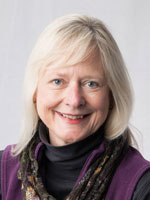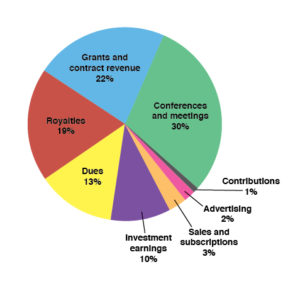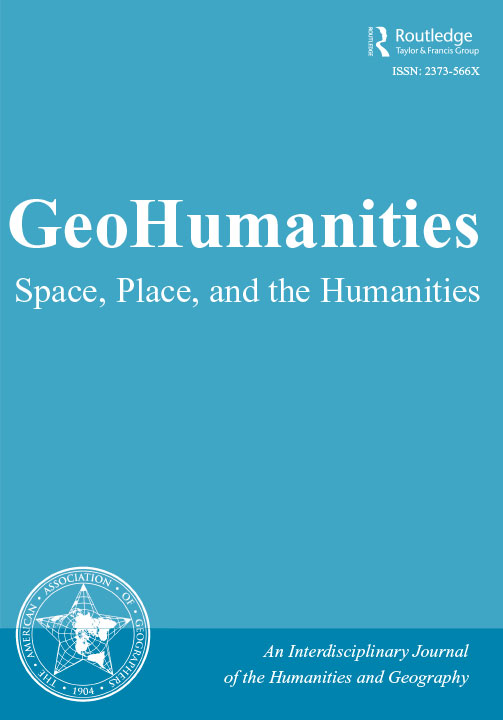What We Do
 As I prepare for the upcoming Council meeting in San Francisco at the end of this month, it occurs to me that none of my columns has focused on the actual workings of Council and the talented professional staff of the Association. Many of you are not aware of our activities but this column is an excellent opportunity to provide a few examples and to seek your reactions and engagement.
As I prepare for the upcoming Council meeting in San Francisco at the end of this month, it occurs to me that none of my columns has focused on the actual workings of Council and the talented professional staff of the Association. Many of you are not aware of our activities but this column is an excellent opportunity to provide a few examples and to seek your reactions and engagement.
Example 1: Student Representation on Council
The Council meets as a whole twice each year, once in the fall and at the annual meeting in the spring. The Executive Committee (past president, president, vice president, executive director, treasurer, and secretary) meet a couple of weeks before Council to set the agenda, discuss critical issues, and to ensure that the organization is achieving the goals set forth in our Long-Range Plan (more on that later).
At the fall meeting which coincided with SWAAG in San Antonio, the student representative to Council, Sara Diamond, University of Texas Ph.D. candidate, brought forward a request that AAG consider adopting the student representative position as a formal member of the AAG council with full voting rights. After a brief discussion, we appointed a task force to examine the issue including Councillors Julie Cidell (West Lakes), Patrick Lawrence (East Lakes), and Greg Pope (National Councillor). This group, joined by Brian Williams, Ph.D. candidate at the University of Georgia and current president of the Graduate Student Affinity Group (GSAG), talked via phone in February. Sara and Brian made a persuasive argument; students make up 39 percent of AAG membership (4,546 out of a total 11,735 in 2015) and this number is expected to grow. It is important that there is formal representation of student interests both for council decision making and as a symbol of AAG’s commitment to all of its members. Student perspectives often differ from faculty, and a student voice on the council may provide ideas and ask questions not thought of by current council members. And then they hit the core argument: a formal council position that represents current student voices will help AAG to stay relevant to student and early career members.
We asked questions to clarify goals and procedures. I reported that Doug Richardson, our Executive Director, assured me that individual ballots could be sent to student members (both undergraduate and graduate). The group felt that all students should be represented by a single voting member, assuming that graduate students would have the greatest stake and thus likelihood of election but understanding that whoever was elected would have the responsibility to represent both graduate and undergraduate students.
We eventually agreed that this student representative could follow the same role, nomination, and election procedures as a National Councillor, that is, this could be considered a national councillor particularly representing students. Nominations could be handled just as for other national AAG offices with the expectation that a student member be added and elected to the Nomination Committee eventually. It would be a two-year position, thus nominees would have to be students for at least 1.5 years of the two-year term.
This is proposed as a description of the role of a student councillor that will be taken up by Council later this month:
The AAG Student Councillor is charged to act as a representative, liaison, and coordinator of activities among students at all levels, with Council and the AAG Office; attend and participate in AAG Council Meetings; report AAG Council actions and initiatives to students; and develop ideas for promoting and maintaining student membership in the AAG.
Of course, this means that if approved, the Constitution will have to be amended. Stay tuned for further discussion. And let me and your regional and national councillors know what you think about this issue.
 Example 2: Dues Structure
Example 2: Dues Structure
Members may not be aware that AAG dues are only 13 percent of our total income (see the accompanying graphic). We have a very progressive dues structure based on income, but this may disadvantage us in terms of retaining members as they transition from school to initial employment in the public sector or as an assistant professor or a post-doctoral position. This hypothesis is supported by the results of the membership survey conducted by the consultancy McKinley Associates. Building on this finding, vice-president Glen MacDonald asked graduate students in his group to reflect on membership issues and prepare a report. Their conclusion was that the cost of AAG student membership dues and meetings may be too prohibitive for full and consistent engagement with the organization.
When the Executive Committee met in mid-February, we discussed the membership survey and related issues. To what extent are annual student dues a revenue generator for AAG? Can recent graduates be eased gradually into a professional membership fee? Can AAG enhance its travel grants and work-study program to subsidize student participation in the annual meeting? Is this an opportunity to strengthen the intellectual value of regional meetings that are frequently more affordable?
We asked Doug Richardson and Meridian Place staff to carefully examine the dues structure and related issues; the Membership Committee under the leadership of Shawn Hutchinson (Great Plains-Rocky Mountains) is also examining policy changes. We will analyze the data and proposals in San Francisco with an eye toward retaining membership at the lower end of the dues structure while not bleeding those at the upper end. What do you think? And to learn more about the membership survey, please plan to attend the survey session on Friday, April 1, at 11:40 in Golden Gate 1, Hilton. All will be revealed, no joke!
Example 3: Graduate Education
At the fall meeting, Sara Diamond on behalf of graduate students, asked Council and the Association to endorse a series of best practices to guide departments in their relations with graduate students. This is a very interesting idea but Council felt the list of practices as presented needed deeper consideration; some of the requests are beyond the scope of any individual department to provide, for example, access to affordable housing. Sue Roberts, National Councillor, and I are working with Sara to redraft a document consisting of two parts, one for departments to use as guidance when they develop their own programs and one for students to use as they make the decision about where to attend graduate school. These documents should be extremely useful in ensuring that departments are healthy for students as well as faculty. What are your thoughts?
In each of these examples I hope I have highlighted some of the ways Council and staff work to improve our organization and discipline. To conclude, I’d like to refer you to the AAG Long-Range Plan. A copy of this document will be in each bag at the annual meeting. It is our touchstone as we move forward and I wish to highlight it here as another example of the work of once and future Council members.

